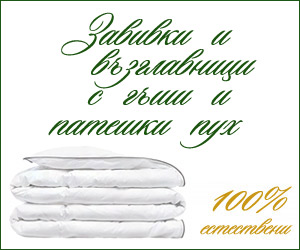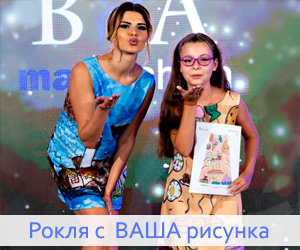FRANCO MOSCHINO: “fashion shows can be dangerous for your health”
 Franco Moschino was born on February 27, 1950, in Abbiategrasso, Italy, and died on September 18, 1994 in Milan. From 1967 until 1970 he attended the Accademia delle Belle Arti in Milan. While he studied he drew sketches and fashion illustrations. He was noticed by Gianni Versace and invited to work for him from 1971 until 1977. He was chief designer of the fashion label Cadette (1977-1982). He founded his own company, Moonshadow, in 1983 and launched the Moschino Couture label that same year. He began with ladies’ fashion, but in 1986 he already made a debut in menswear. He released his first perfume for women a year later. Then lines like Cheap & Chic, founded in 1988 (according to some sources 1991), and Moschino Jeans came. He opened his first boutique in Milan in 1989 and celebrated the tenth anniversary of the fashion house with a special exhibition in Milan.
Franco Moschino was born on February 27, 1950, in Abbiategrasso, Italy, and died on September 18, 1994 in Milan. From 1967 until 1970 he attended the Accademia delle Belle Arti in Milan. While he studied he drew sketches and fashion illustrations. He was noticed by Gianni Versace and invited to work for him from 1971 until 1977. He was chief designer of the fashion label Cadette (1977-1982). He founded his own company, Moonshadow, in 1983 and launched the Moschino Couture label that same year. He began with ladies’ fashion, but in 1986 he already made a debut in menswear. He released his first perfume for women a year later. Then lines like Cheap & Chic, founded in 1988 (according to some sources 1991), and Moschino Jeans came. He opened his first boutique in Milan in 1989 and celebrated the tenth anniversary of the fashion house with a special exhibition in Milan.
Franco Moschino’s last idea was the creation of the Ecouture collection out of environment-friendly fabrics. After the untimely death of the designer, his ideas continued to be developed under the direction of Rossella Jardini who joined him in 1981 (his first assistant and collaborator until 1994). Today Franco Moschino’s total sales amount to 238 million US dollars. Just in the last seven years the company has increased its revenue nearly fivefold. Alberta and Massimo Ferretti’s Aeffe SpA, a major Italian producer of clothes and accessories, has been the owner of Moschino since 1999.


Italian fashion design is charming with its Mediterranean freshness, the coarseness of street style and the temptation of romantic femininity. But also with something else – and that is precisely the specific character of artists like the amazing Franco Moschino, whose star, although it shone for just two decades, succeeded in illuminating forever world visual culture. Who was Franco Moschino? To what was his instant success due? What made Gianni Versace invite him while even a student to draw sketches and illustrations for the fashion house? Why do many call Moschino the enfant terrible and the unruly boy, comparing him to famous French kinsman Jean Paul Gaultier? Why is the designer so ironic in his messages to the public? Which are his main breakthroughs in the traditional fashion system?...
 AESTHETICS AND PHILOSOPHY OF THE ITALIAN ENFANT TERRIBLE
AESTHETICS AND PHILOSOPHY OF THE ITALIAN ENFANT TERRIBLE
A close look into the history and successes of the greatest fashion designers reveals similar peculiarities of character. Their originality is usually based on both individual creativity and ingenuity (in terms of fabrics, silhouettes, constructive solutions and so on), and on finding their own formula of difference – either in extravagant public conduct and look, or in out-of-standard and scandalous approaches to advertisement and mass presentations. For the advertisement campaign of his perfumes, Moschino launched posters in which beautiful women drank the perfume with straws, as if it were Coca-Cola or a hit cocktail. By the way, the designer set great store by the aromatic liquids, believing in the maxim that “perfumes make fashion”. Over the years, Moschino created a lot of hit fragrances: 1987 - Moschino (women); 1990 - OKKO (men); 1995 - Cheap and Chic (women); 1996 - Oh de Moschino (women); 1997 - Uomo Moschino (men); 2001 - L'eau Cheap and Chic (women); 2004 - Moschino Couture (women); 2005 - I Love Love (women). They all indicate passion and modernity, enticement and magnetism, finesse and individuality.
Franco Moschino’s challenges to public opinion, as well as the limitless extravagant ideas seem to have no end. In a much-publicized presentation – or rather action against AIDS – a model appeared in a Moschino outfit covered entirely with condoms (by a quirk of fate this is precisely the illness which ended the designer’s life). The philosophy of style and the designer signature of Franco Moschino show a predilection for two things: defence of the personal taste and identity of each client, on the one hand, distinction amidst the general fashion landscape with peculiar, fresh and frequently strange solutions of the look – on the other. Moschino is in fashion, but is also against fashion. He is in fashion inasmuch as it is fashion precisely, perceived as an invaluable chance to be oneself and a means of expression of the Ego, that is a wonderful field for free expression of thought, emotion and culture. He is against fashion because the market of luxury goods is capable of corrupting taste, of unifying and commercializing persons, of turning them into pitiful consumers, subject to alien strategies and manipulations.


Moschino never concealed his passion for surrealism and the art of one of the greatest revolutionaries in fashion, Sonia Delaunay, author of the technique of simultaneous design. A number of Franco Moschino works were inspired and dedicated to Delaunay, and the patchwork technique held a remarkable place in most of his collections.
Many authors speak of the ingenious and inspired ideas of Franco Moschino, as for example the use of eggshells and small windmills as buttons, or the introduction of the technique of op art by painting and putting stamps on the clothes themselves. Suits with extravagant and shocking applications like knives and forks also magnetized attention and confirmed his image as an innovative and brave artist. Moschino was also one of the first (if not the first) designers to skillfully use optic imitation of pockets, seams and so on - a style that today truly enjoys great popularity. Moschino's fashion won thousands and millions of fans because it was the fruit of his boundless imagination, sense of humour and never-ending desire to provoke established values and standards. In his crazy experiments he reached the point where he parodies the famous Chanel No. 5 – a circumstance which got him in trouble and court battles with the French doyen of world fashion, the giant Chanel. As a result Moschino was sued for this "license" of his and literally had to pay for that.
 REBELLION THROUGH IRONY AND SARCASM
REBELLION THROUGH IRONY AND SARCASM
One cannot say definitely what precisely in the style and manner of the student of fine arts attracted the attention of another genius of Italian fashion - Gianni Versace. Whether the graceful skill and dreaminess or the defiance and rebellion against the boring academic ways of drawing? It is a fact, however, that both in the collections of Versace and in the works of Moschino (when he worked as an independent designer) one can distinctly see the finesse and the sensual Mediterranean beauty, the daring and the courage to blow up the usual notions of elevation and elegance. Many inscriptions and appeals on the windows of Moschino’s boutiques revealed his rebellion, which in some cases relied on subtle irony and in others - on sharp sarcasm. Slogans like “fashion-fashoff” and “Ready to where?” (a pun on the English ready-to-wear, which is a variant of the French prêt-à-porter) were born by his wit. Who lays at the basis of his ironic distance from established designers and fashion houses, and as a whole from the corrupting system of fashion? And didn’t he thus go against himself – didn’t he try to cut the branch he was sitting on? Moschino is convincing proof that in the era of post-modernism, irony and ridicule, parody and verbal collage are the principle means of expression, which help overcome patters, schemes in visual art. It is to his enormous advantage that he used not only the technique of art, but also numerous verbal tricks, direct appeals, inscriptions and adages which raised fashion to the rank of a literary system not only in the interpretation of Roland Bart, but also as topical, social literature. It was precisely Moschino’s arsenal of expression and artistry that helped the style of dressing become immune to the most terrible vices of the world of fashion: conformism, consumer attitude, excessive extravagance and squandering as an end in itself. Everyone can be fashionable in the manner he or she decides, not by following blindly what glossy magazines spew or what shining shop windows appeal to - this is the underlying meaning encoded in nearly all works of Franco Moschino. His rebellion was not against fashion as a means of being original and finding the most adequate style of expression and communication, of identification and enrichment of values, but against the manipulative fashion system which craftily catches its innumerable victims like a spider in its net.
BREAKTHROUGHS IN TRADITIONALISM
Criticism of excessive luxury and the elevation of super-consumption to the status of a cult is one of the greatest criticisms leveled at haute couture – and not without reason. Moschino made one of the first breakthroughs in this traditional attitude to expensive clothes. He could not bear and did not accept fashion designers being perceived as some sort of servants to consumer society. To be fashionable, in his opinion, did not mean one had to wear excessively expensive clothes and jewellery with astronomical price tags by far. It is not by chance that one of his most popular labels was Cheap&Chic. When one looks into some of his most popular slogans one understands how a man can make it in the world of luxury using means that could be called anti-luxury, anti-fashionable and anti-commercial. Here are some of them: “Good taste doesn't exist”, “Stop the fashion system”, “A good copy is better than a bad original”, “Warning: fashion shows can be dangerous to your health”, among others. Like his attitude to creativity itself, the attitude of the designer to public presentations and advertisement campaigns is mischievous, ironic, critical and unconventional. He experimented and showed in practice that elegance can successfully be displaced by extravagance. And when he was sick and tired of the repetitive catwalking of models and realized the banal stir around every review, he stopped showing fashion in this way and preferred to launch his new ideas through video films and multimedia.

There are not many people who know that the first environment-friendly label in fashion belongs precisely to Franco Moschino. At the end of his relatively short life he registered the Ecouture trademark involving eco-design. This presupposed use of environment-friendly and guaranteed materials, as well as the production of clothing and accessories in a manner that did not pollute or endanger the environment. But even before the creation of this line the designer was passionate about using artificial leather, plush and synthetics as replacements of materials, for which animals are killed. At the end of the 1990s, he showed a collection with the unambiguous title Fur for fun, in which the clothes were made of faux fur.

MOSCHINO TODAY
Rossella Jardini, who worked at Moschino’s company from the very beginning and who took his place, is without doubt the one behind the vitality of the Moschino brand today. Her frankness in an interview is indicative of the spirit and system of values now active in the Moschino empire: “Our philosophy is simple – chic is freedom. The secret of style lies in combining clothes and wearing them for pleasure.” She does not hide the fact that her basic inspiration comes from the aesthetic and professional heritage of Franco Moschino, whom she can never forget and continues to love deeply. Another designer, Vincent Darré, who debuted for the fashion house with his spring/summer 2003 collection, is also infected with the charm of Moschino, with his incorrigible sense of humour and comic. In his attempt to continue Moschino’s traditions he reached the point, where he made the models “walk backwards” on the runway – an intriguing form of presentation which was definitely memorable and commented. In recent years, Moschino pieces and the different lines of the fashion house have shown a turn for embroidery, original applications and ornamentation. The distinctive characteristics of the latest collections are their stirred outlines, the great opportunities for practical combinations, the perfect silhouette and the delicate – and at the same time determined – interpretation of subculture, the atmosphere of the street and the values of the young generation of the new millennium.


For example, the rather more extravagant line imposed by the Moschino Cheap&Chic brand was typical of the autumn/winter 2007-2008 season. The stress lays on balloon-type dresses and skirts. The materials were wool, polyester and cotton. The colours ranged between golden, white, black and grey. The accessories featured rounded shoe tips (both high heels and platforms are in vogue). Models with straps around the ankle and open at the toes are in particular demand.
* * *
The life and abundant art of Franco Moschino are symptomatic of the career of every original and innovatively thinking designer. They are indicative of the limitless opportunities offered by the territory of fashion in respect to ingeniousness, provocativeness and sense of humour. Thanks to artists like Moschino, contemporary fashion design is among the leading cultural factors, a wonderful chance and instrument to uphold individual identity, as well as a powerful “vitamin” for social variety. His style is a real anti-venom against super-consumer attitudes and manipulative extremes of commercial fashion.


References:
О`Хара, Дж. Енциклопедия на модата. “Библиотека 48 “, С., 1995; Moschino: Irreverence As An Art Form. By: Boyd Davisр 22.03.2001. In: www.fashionwindows.com; Fashion now. i-D selects the world’s 150 most important designers. Edited by Terry Jones & Avril Mair. – Köln: Taschen, 2005; Martin, R. The St. James Fashion Encyclopedia: A Survey of Style from 1945 to the Present. Visible Ink Press. Detroit, 1997; McDowell, C. Fashion today. Phaidon Press Limited. London, 2000; Reuters Television News; O`Hara,G.The Encyclopaedia of Fashion.From 1840 to the 1980s.Thames and Hudson. London,1986; Stegemeyer, A. Who`s Who in Fashion. Third edition. Capital Cities Media, Inc. Fairchild Publications, New York, 1996; Internet sources: www.moschino.it, www.infomat.com among others.
Photos:
1.Franco Moschino.
Photo: © Seeling, Ch. Fashion, The century of the designers 1900 – 1999 . Cologne, 2000.
2. Collection of Franco Moschino, 1984.
Photo: © Arnaldo Castoldi / McDowell, C. Fashion today. Phaidon Press Limited. London, 2000.
3.Collection of Moschino, inspired by the patchwork of Sonia Delaunay
Photo: © Seeling, Ch. Fashion, The century of the designers 1900 – 1999. Cologne, 2000, p. 534.
4.– 6. Collection of Moschino from 1990s
Photo: © Seeling, Ch. Fashion, The century of the designers 1900 – 1999. Cologne, 2000, p. 534 - 535.
7. Collection of Rossella Jardini for Moschino.
Photo: © Fashion now. i-D selects the world’s 150 most important designers. Edited by Terry Jones & Avril Mair. – Köln: Taschen, 2005.
8. Collection of Rossella Jardini for Moschino, December 2000.
Photo: © David Slijper, styling by Merryn Leslie / Fashion now. i-D selects the world’s 150 most important designers. Edited by Terry Jones & Avril Mair. – Köln: Taschen, 2005.
9. Accessories of Moschino, Autumn-Winter 2005-2006.
10. Collection of Rossella Jardini for Moschino, Autumn-Winter 2007 – 2008.
Photo: © Moschino
11. – 12. Collection of Rossella Jardini for Moschino, Autumn-Winter 2009 – 2010.
Photo: © Marcio Madeira / www.vogue.com
13. – 14. Collection of Rossella Jardini for Moschino, Spring-Summer 2010.
Photo: © Marcio Madeira / www.vogue.com
Transaltor: Reny Ivanova
Read: 28461 times © Fashion Lifestyle Magazine, issue 29, January 2010
MORE PUBLICATIONS:ISSUE 28: NINO CERRUTI - eternal revelation of elegance
ISSUE 27: Gianfranco ferre: “I am designer even in my soul”
ISSUE 26: ELSA SCHIAPARELLI - aesthetics of eccentricity
ISSUE 25: EMILIO PUCCI: the lord of bright colours
ISSUE 24: Alberta Ferretti: romanticism and luxury, femininity and sex appeal







